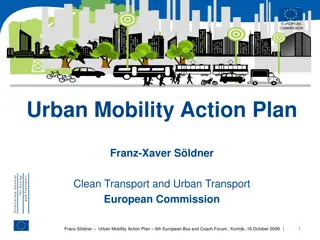Urban Heat Hotspots in Rajkot City: A Case Study
This case study explores urban heat hotspots in Rajkot City, India, highlighting the impact of urbanization on heat islands and the need for a warning system at ward/subward levels. The study also discusses the demographic trends, population growth, and existing land use in Rajkot, emphasizing its status as a major industrial hub in Saurashtra.
Download Presentation

Please find below an Image/Link to download the presentation.
The content on the website is provided AS IS for your information and personal use only. It may not be sold, licensed, or shared on other websites without obtaining consent from the author.If you encounter any issues during the download, it is possible that the publisher has removed the file from their server.
You are allowed to download the files provided on this website for personal or commercial use, subject to the condition that they are used lawfully. All files are the property of their respective owners.
The content on the website is provided AS IS for your information and personal use only. It may not be sold, licensed, or shared on other websites without obtaining consent from the author.
E N D
Presentation Transcript
Urban Heat Hotspots- Case study of Rajkot City, India Ajit Tyagi, Rohit Magotra, Mohit Kumar, Ananya Bhatia, Yashi Sharma, and Moumita Shaw Integrated Research and Action for Development
Presentation. Urbanisation : Urban Heat Island Existing Observation and Warning System Need for Ward/Sub Ward Level Observations, Vulenrability Warning and Response Mechanism
Mega Cities in South Asia S. No. City Population (2018) Growth (2010- 18) Population(2030) 1 Delhi 28.5 million 81.7% 38.99 million 2 Mumbai 20.0 million 23.7% 24.47 million 3 Dhaka 19.6 million 90.4% 28.8% million 4 Karachi 15.4 million 56.7% 20.43 milllion 5 Kolkata 14.7 million 12.1% 17.58 million 6 Lahore 11.7 million 110.5% 16.8 million 7 Bengaluru 11.4 million 105% 16.23 million 8 Chennai 10.5 million 58.6% 13.8 million
Fast Developing Cities Ahmedabad, Hyderabad, Pune, Kanpur, Lucknow, Nagpur, Jaipur Patna, Kochi, Bhopal, Coimbatore, Visakhapatanam, Raipur, Nashik Guwahati, Bhubaneswar, Rajkot Vijayawada, Jamshedpur, Mysore Kozhikode, Tiruchi, Chandigarh Ghaziabad, Noida, Faridabad
Geographical Location RAJKOT WITHIN GUJARAT NOT TO SCALE NOT TO SCALE NOT TO SCALE RAJKOT MUNICIPAL CORPORATION WARDS MAP OF INDIA
City Details - Demographics Years Rajkot City Population Growth Rate Density (Sq. Km.) Area (Sq. Km.) 1981 1991 2001 2011 4,45,076 5,59,407 10,02,000 12,86,678 48.3 % 25.69 % 79.12 % 28.41 % 6,450 8,107 9,557 12,275 69 69 104.85 104.85 Source : Census of India Population Projection 2030 2,416,000 (Urban Agglomeration) Average annual rate of Change (%) 2000-2018 3.3 2018-2030 2.6 Source : UN World Cities Report , 2018 Years No. of Notified Slum No. of Households in Slum Area 4,927 44,914 38,557 Population in Slum Area 43210 202371 189360 Slum Population as % of total population 14.39 20.20 14.7 1971 2001 2011 24 84 118 Source : Poverty Alleviation Plan, RMC, 2008 Census of India
City Details Existing Land Use 2012 (RUDA) Existing Land Use 2012 Rajkot Urban Development Authority RUDA Rajkot is a major Industrial Hub of Saurashtra More than 43000 industrial units are located in Rajkot Rajkot has grown to be major center for the production of Diesel Engines. Engineering and Automobile Industries Castor Oil Industries Gold & Silver Jewelry City is a key node on the proposed EconomicCorridor along the Surendranagar Rajkot Morbi - Kandla link to it s growing economic importance Source: RMC Smart Cities Source : RUDA
City Details Proposed Land Use 2031 Proposed Land Use 2031 Rajkot Urban Development Authority RUDA S.No PROPOSED LANDUSE RMC %AGE 1 Residential 6228.16 59.40 2 TOZ 154.03 1.47 3 Affordable Housing 46.58 0.44 4 Gen. Commercial 221.73 2.11 5 Gen. Industrial 635.24 6.06 6 Public Purpose 305.37 2.91 7 Recreation 517.05 4.93 8 Agriculture 69.34 0.66 9 Other Area 2307.49 22.01 Total 10485 100 Source: RUDA DP 2031 Source: RUDA DP 2031
Rajkot Slum Concentration Source: Rajkot Municipal Corporation
Climatic Conditions Climate of the city is characterized by Hot and Dry in Summer, wet southwest monsoon season and mild winter with low humidity. Average annual Maximum Temp 34.1 C Average annual Minimum Temp 20.9 C Mean Maximum Temp. of Hottest Month (May) 40.5 C Mean Minimum Temp. of Hottest Month (May) 25.4 C Mean Maximum Temp. of Coldest Month(Dec) 28.4 C Mean Minimum Temp. of Coldest Month(Dec) 12.8 C Ever Recorded Maximum Temp. was 47.9 C on 13 May 1977 Ever Recorded Minimum Temp. was -0.6 C on 16 Jan 1935 Average annual Rainfall 66.7 cm Average annual Rainy days 29 Mean monthly highest rainfall observed in July 23 cm Mean monthly lowest rainfall observed in December, January & March 0.1 cm Source: IMD Pune
Past Temperature Trends- Rajkot Source: Sarkar J et al (2017) Future climate change scenario in hot semi- arid climate of Saurashtra, Gujarat by using statistical downscaling by LARS-WG model. MAUSAM, 68, 4 (October 2017), 589-596
Past Temperature Trends- Rajkot Source: Ray et al., 2009
Past Temperature Trends- Rajkot Decadal Frequency of MHW and SHW in Rajkot 35 33 30 25 21 Frequency 20 15 10 5 5 2 1 1 1 0 0 1971-1980 1981-1990 1991-2000 2001-2010 Period Moderate Heat Wave (MHW) Severe Heat Wave (SHW) Source: Ray et al., 2012
Urban Heat Island : UHI Urban and suburban areas experience elevated temperatures compared to their outlying rural surroundings; this difference in temperature is what constitutes an urban heat island. The annual mean air temperature of a city with one million or more people can be 1 to 3 C warmer than its surroundings, and on a clear, calm night, this temperature difference can be as much as 12 C.
Delhi UHI Max Air Temperature 30 May 2019 : 48 degree C Thermal Map
Rajkot : UHI Thermal Map Air Temperature
Existing Observation and Warning System Existing Observation and Warning System Single IMD Observatory All India Warning Criteria for Heat Wave used to issue Area Warning City specific Warning Thresholds are being worked out
Observations IMD Vs AWS IMD vs AWS TMax for February 2018 - Rajkot IMD vs AWS TMax for January 2018 - Rajkot 39.0 35.0 38.0 34.0 37.0 33.0 36.0 35.0 32.0 34.0 31.0 33.0 30.0 32.0 29.0 31.0 28.0 30.0 27.0 29.0 IMD vs AWS TMax for April 2018 - Rajkot IMD vs AWS TMax for March 2018 - Rajkot 44.0 41.0 43.0 40.0 42.0 39.0 41.0 38.0 40.0 37.0 39.0 36.0 38.0 35.0 34.0 37.0
Observations IMD Vs AWS IMD vs AWS TMax for May 2018 - Rajkot IMD vs AWS TMax for June 2018 - Rajkot 45.0 42.0 44.0 41.0 43.0 40.0 42.0 39.0 41.0 38.0 40.0 37.0 39.0 38.0 36.0 IMD vs AWS TMax for August 2018 - Rajkot IMD vs AWS TMax for July 2018 - Rajkot 39.0 38.0 37.0 37.0 36.0 35.0 35.0 33.0 34.0 33.0 31.0 32.0 29.0 31.0 27.0 30.0 29.0 25.0 28.0
Comparison LST vs AAT No Data Legend Temperature Range Low (Upto 40 Degree C) Medium (40.1-42 Degree C) High (42.1-44 Degree C) Very High (Above 44 Degree C)
Comparison LST vs AAT Legend Temperature Range Low (Upto 40 Degree C) Medium (40.1-42 Degree C) High (42.1-44 Degree C) Very High (Above 44 Degree C)
Comparison LST vs AAT Legend Temperature Range Low (Upto 40 Degree C) Medium (40.1-42 Degree C) High (42.1-44 Degree C) Very High (Above 44 Degree C)
Climate Change Projections- Rajkot Source: Sarkar J et al (2017) Future climate change scenario in hot semi- arid climate of Saurashtra, Gujarat by using statistical downscaling by LARS-WG model. MAUSAM, 68, 4 (October 2017), 589-596
Current State GHG Emissions have risen 1.5% per year over last decade, hitting an all time high of 55.3 giga tonnes in 2018. Unless GHG emissions fell by 7.6% each year between 2020 and 2030, the world can not on track towards the goal of 1.5 degree celisus. Temperature may increase by 3.5 degree celisus
Study by Tata Centre for Development at University of Chicago
Identification of Hot Spots Wards All the 9 surveyed hotspots are falling in high (42.1-44 C) and very high (> 44 C) temperature zones. The hotspot wards identified are ward numbers 1, 5, 10, 11, 12, 13, 14, 15 and 18.
Way Forward. Need to Factor Urbanisation, UHI and Climate Change Ward Level Observation Ward/Sub Ward Level Vulnerability Analysis Temperature, Physical, Socio-Economic Ward Level Thresholds : Ward Mortality Ward Level Warning, Preparedness and Mitigation
Thank You For more details contact: Prof. Ajit Tyagi, atyagi @irade.org























